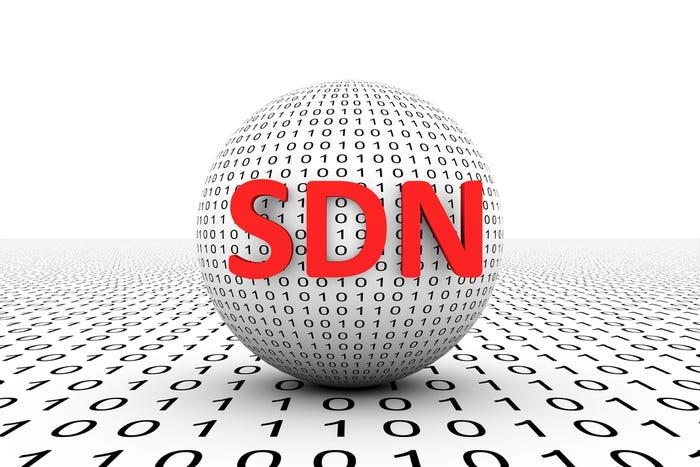SDN Hasn’t Faded, It's Just Evolved
A look at how software-defined networking is expanding with the incorporation of analytics and how service providers are implementing the technology.
March 27, 2018

Often in the networking space, marketing moves faster than technology. That's a shame because just as the software-defined networking (SDN) market is maturing and is being implemented in real-world networks, the marketers have moved on to the next shiny new object and are now downplaying SDN, just as it becomes real.
The hot new buzzwords in networking include intent-based networking (IBN), Intent-based analytics, and network automation. IBN and IBA technologies were pioneered by startup Apstra, but are now being adopted by networking giant Cisco. These technologies shouldn't be thought of as separate markets; they're all part of the evolving and expanding SDN market, which I call SDN 2.0. Or you can call it SDN 3.0 or 4.0, whichever you like.
Telemetry is key
In a recent report, "SDN 2.0: Monitoring, Analytics, and Automation," my research firm Futuriom defined this next generation of SDN by talking to dozens of network operators. What we found is that the SDN market is entering a new stage that will integrate telemetry, monitoring, and analytics to deliver increased automation. Operators, including service providers and cloud network managers, are building networks that can collect large amounts of telemetry data to drive analytics and automation. The goal is to remove manual networking configuration from their operations, reducing the cost of operating the network.
Service providers, in particular, see SDN 2.0 as a key driver of automation. They want to drive real-time monitoring and big data analytics into their network. To do this, they need a wide array of tools: SDN network fabrics, integration between the network overlay and underlay, real-time monitoring technology, and built-in telemetry. Some of this technology can be purchased from an integrated SDN 2.0 vendor such as Big Switch Networks, Pluribus Networks, or even an established supplier like Cisco or Arista, but other parts of it are obtained by acquiring best-of-breed technology. This might include, for example, IBN and IBA from Apstra, orchestration from vendors such as Anuta Networks, service assurance from CENX or InfoVista, or network monitoring tools from Netscout.
The emerging analytics layer
Some of the recent action comes in higher level analytics functions, which will help drive the state for IBN and automation. Cisco is infusing its portfolio with analytics technologies to compete with startups such as Apstra. Big Switch and Pluribus plug analytics into their SDN network fabrics, which run on their own operating system (OS). And cloud networking star Arista Networks has Cloud Vision, its own analytics platform.
The big question as SDN 2.0 evolves is how these pieces of the puzzle will fit together in the future. Will end users chose to adopt a fully integrated solution from a few vendors? Or will they choose to cobble together best-of-breed technologies from a range of providers, including their own network engineers?
Right now, it appears to be unfolding in a wide range of deployments. Service providers are loathe to build their own networks, but they are increasingly relying on a combination of startup vendors, established vendors, open source technology, and integrators to build their networks more in the cloud mold, which downplays the reliance on a single vendor. But this will take many years as service provider infrastructure is complicated, with many layers of legacy technology.

SDN.jpg
Nonetheless, communications service providers say that progress has been made in driving automation and analytics into networks. For example, AT&T recently said it plans to have 75% of its network virtualized by 2020. However, many large service provider technologists point to the complexity and size of this undertaking as they seek to "cloudify" their networks and drive automation.
Cloud operators and large enterprises are also experimenting with many new technology platforms, including those from startups. However there's evidence in the market that they are steering away from proprietary networking platform to more open networks. Witness the proliferation of application programming interfaces (APIs) in the market, which enable proprietary network operating systems such as those from Arista, Cisco, and Juniper to interoperate with networking monitoring and analytics software from other vendors.
Moving toward a more open network
The emergence of fully functioning SDN fabrics creates new opportunity to integrate software-based monitoring and analytics functions. This is enabling SDN to scale to larger networks, particularly those in service provider operations, which are in need of more open and scalable platforms. Further interoperability and configuration tools are needed to integrate multi-vendor service-provider environments. In addition, new data models are needed to standardize operations and streamline the adoption of APIs.
The SDN market hype may have died down, but that's just because the technology has exited the hype curve and has entered the implementation curve.
About the Author
You May Also Like




